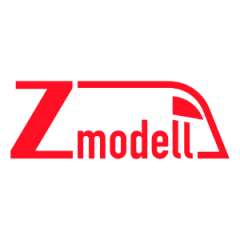Search the Community
Showing results for tags 'sound'.
-
Warmest Christmas greetings to everyone, This is my first post on this forum, so let me introduce myself. My name is Alex, I am from Kyiv, Ukraine. I had to move to Germany after the war began in my native country. I am collector of Z scale models since 2006 and manufacturer of small series products like train models, digital decoders, load inserts and accessories for Z scale 1:220 under my own brand Zmodell since 2016. Here is my Facebook page: https://www.facebook.com/Zmodelltrains I am also a member of Z scale International Forum (Germany) and AZL forum (USA): https://f.z-freunde-international.de/memberlist.php?mode=viewprofile&u=1508 https://azlforum.com/user/565 I am also a member of Trainini Team - German online magazine about Z scale model trains: https://www.trainini.de/team And of course, I am a big fan of Japanese Railways and owner of one of the biggest collections of Z scale 1:220 Japanese trains in Europe. My collection counts numerous models from such manufacturers as Rokuhan, Tenshodo, Prmloco, Platz/F-Toys, ZJ Gauge, Akia and others. In 2019, I started developing my own digital decoders based on Doehler & Haass and ESU technology - solely for the needs of Z scale models from Märklin and AZL. In this report I would like to introduce my next development – sound decoder for Rokuhan trains. After successful development of the sound board for Z scale Marklin V320 diesel locomotive (Art. No. 88320 and 81320), based on the newest and the smallest sound decoder from ESU – LokSound 5 Nano, many new possibilities of equipping Z scale models with sound features became clear to me. Report about my sound decoder for V320 locomotive can be found here: https://www.facebook.com/100063508513124/posts/pfbid0hbX6d949KEs1mwF76HsiNUcmNHzTmvsr15bAkAJEPV3oWgp7urmzMiq2BeMihWVZl/ One of decisive factors that brought me to the idea of developing something for Japanese trains became the availability of prototypical sound projects for ESU sound decoders created and provided for free non-commercial usage by Desktopstation.net – Japanese provider of open-source DCC hardware and software that supports and sponsors creating of prototypical sound projects by railway enthusiasts in Japan. The list of sound projects is available here: https://desktopstation.net/sounds/list_eng.html While multiple unit trains is not the strongest category in Märklin’s product line, it is a major part of the whole lineup of Rokuhan rolling stock products. Furthermore, Rokuhan already showed, let me say, more progressive way of thinking in comparison to Märklin in terms of introducing digital control to Z scale. Digital command station and a number of different digital decoders for rolling stock and accessories already exist in Rokuhan’s product line. I have to admit that these products are not ideal in their current generation (especially in comparison to modern competitive products from German manufacturers), but they fit quite well within the needs of railway hobbyists in Japan, and in any case, it is better than nothing at all. One of the popular digital products of Rokuhan is a universal DCC board (Art. No. A059) that fits into all types of their passenger cars, cars of multiple unit trains and single running railcars (aka railbuses). A059 board features one good advantage: it actually combines two different devices together – locomotive decoder and function decoder for interior lighting. I fitted all Rokuhan trains in my own collection with these digital boards. As I have already mentioned above, availability of the prototypical sound project for Shinkansen 500 Series high-speed train and a number of other projects for Japanese trains existing in Z scale inspired me to start this development. And my idea was to develop a universal solution (just like A059 board from Rokuhan) which would fit into the maximum possible number of models. After making all necessary measurements of different train models, I developed the following specifications for my new digital sound board: - It will exist in two forms – long and short (corresponds to types A and D, according to Rokuhan’s specifications, see details here: https://www.rokuhan.com/products/wp-content/uploads/2022/01/A053_A059_DECODER_INSTRUCTION_MANUAL_E_f_18.4.10.pdf). Short form is derived by manual cutting off the long board; - Long form for will be suitable for the motor cars of Shinkansen 500 Series (Art. T013-x) and 0 Series (Art. T020-x) high-speed trains; - Short form will be suitable for the motor cars of the following trains: Tobu 500 Limited Express Train “Revaty” (Art. T034-x), JR 103 Series (Art. T022-x), JNR 113 Series (Art. T001-x, T003-x), JNR 115 Series (Art. T011-x) and JNR 415 Series (Art. T023-x) commuter trains. Very thin motor chassis and extremely silent driving gear are great advantages of Rokuhan trains which contributed for this development to become successful, too. The only train where it turned out to be impossible to fit the sound board is Shinkansen E6 Series – unfortunately, its cars are too small and offer too less available space inside. Also, my board is not compatible with Rokuhan’s Kiha 52 Series railcars due to the specific mounting requirements – different circuit board is needed for this type of the car. By the way, prototypical sound project for Kiha 52 is available at Desktopstation.net, too. I equipped my digital sound board with highly-effective energy storage module that has been already used in my sound decoder for V320 diesel locomotive and proved its efficiency. It is based on 2x 470 µF/16V Tantalum-Polymer capacitors and features overvoltage and thermal protection. I used the same type of the loudspeaker from V320 sound decoder – 15x8 mm model with only 1.5 mm thickness and 32Ω impedance. Luckily, ESU sound decoders support 32Ω speakers (unlike D&H models which require only 4-8Ω models). I prepared two different types of sound boxes – 1.5 mm and 2 mm thick. They are made from clear polystyrene on CNC cutting machine and airbrushed with clear lacquer in order to make them more transparent after CNC processing. Thick 2 mm soundbox is used in long sound board suitable to Shinkansen trains, while 1.5 mm one is used in short version suitable to everything else. I have to admit that I was very impressed by the quality of the sound and its loudness – all this was successfully achieved without any problems, despite very small size of the loudspeaker and soundbox. Choosing the right LEDs that would match the color temperature of the LEDs used in original Rokuhan A059 boards became a very challenging task. For some reason, Rokuhan uses cold white LED in their boards. I tested many different LEDs, and the only suitable model that provided nearly identical color temperature became white LEDs from Osram with 8200K color temperature. So, here are my new digital sound boards. This is the long version – with ESU LokSound 5 Nano sound decoder alongside and new E24 socket visible: And here is a comparison to Rokuhan A059 board cut off to the same size (Type D): The bottom side: You may notice that I used gold plating for my circuit boards, unlike Rokuhan. Also, I added “LV” and “LR” soldering pads for connecting headlights and tail lights connected in anti-parallel – for possible non-standard usage scenarios. And here is the short variant, derived from the long one by cutting: Comparison to Rokuhan A059 board (Type A): Here are the installation samples. Everything is pretty easy here – just like with original Rokuhan digital or analog boards. This is how the sound decoder looks when installed into the motor car of Shinkansen 500 Series high-speed train: Tobu 500 Limited Express Train “Revaty”: JR 103 Series commuter train: JNR 113/115/415 Series commuter train: I have prepared a series of videos demonstrating sound features of different Rokuhan trains equipped with my sound decoders. Once again, all sound projects for all shown trains are prototypical. Note: all non-motor cars in all trains shown in the following videos are fitted with Rokuhan A059 digital boards: Shinkansen 500 Series high-speed train: Tobu 500 Limited Express Train “Revaty”: JR 103 Series commuter train: JNR 113 Series commuter train: JNR 115 Series commuter train: Notice about Shinkansen 0 Series recently announced by Rokuhan: although my digital sound board is suitable for this train, no prototypical sound project available for it. And it is impossible to create it, since these trains are not in service since 2008. Nevertheless, I will try to dig into the subject a bit more and probably to find the closest matching sound project for this train, too. I will post an update here and add a demonstration video, too. Best regards, Alex, Zmodell
-

Has anyone installed a sound decoder into their Kato Shinkansen?
GeorgeHInch posted a topic in DCC, Electrical & Automation
I'm curious if anyone has added DCC sound decoder to their Kato Shinkansen, specifically the E7 or N700A. I saw a thread on here from back in 2015 that started addressing this but it seemed to end very anticlimactically due to limitations at the time. It seems like the non-motored trailer cars for the N700A have a cavern under the floor piece with a metal weight. Since the metal strips already run through here it seems like an easy place to stash a sound decoder with a sugar cube speaker. I assume a decoder and speaker will come close to weight to the metal already there. I think the biggest question here though, has anyone ever generated sound files for any of the Shinkansen? -
So I am hoping to install DCC sound into a Kato N scale D51 steam locomotive (product number 2016-8). I have the locomotive, but I have yet to purchase a decoder or speaker. I wanted to know if anyone else has done this or a similar project and if they have any recommendations for which decoder or speaker to use and if they have any tips for doing the conversion. Thanks in advance!
-
Hello, I'm yaasan from Japan. I'm developing DCC command station and related devices. I would like to introduce our great DCC sound Project "OPEN SOUND DATA". This project provides Japanese train sound for free of charge! These sound data requires ESU's LokSound V4 and 5 series as you know. If you have ESU's lokprogrammer and LokSound decoders, you can install it now! English page: https://desktopstation.net/sounds/index_eng.html Japanese language page: https://desktopstation.net/sounds/ Also we are developing "ExpBoard" series which is installation kit for Japanese Train model (Tomix, KATO, Green Max etc.). HO scale board for KATO: https://desktopstation.net/wiki/doku.php/expboardnext18 N scale board: https://desktopstation.net/wiki/doku.php/expboardecn HO scale generic use: https://desktopstation.net/wiki/doku.php/expboardgeneral Please try OPEN SOUND DATA now! If you have a question, let me know. Thank you for interest.
- 67 replies
-
- 15
-

-

-
Tenshodo still manufactures locomotives with sound decoders that necessitate DC sound controllers to maximize usage potential. I should be able to access all the sound effects with any dc sound controller right? If not, then I will stick to what the manual suggested, the QSI Quantum Engineer.


















